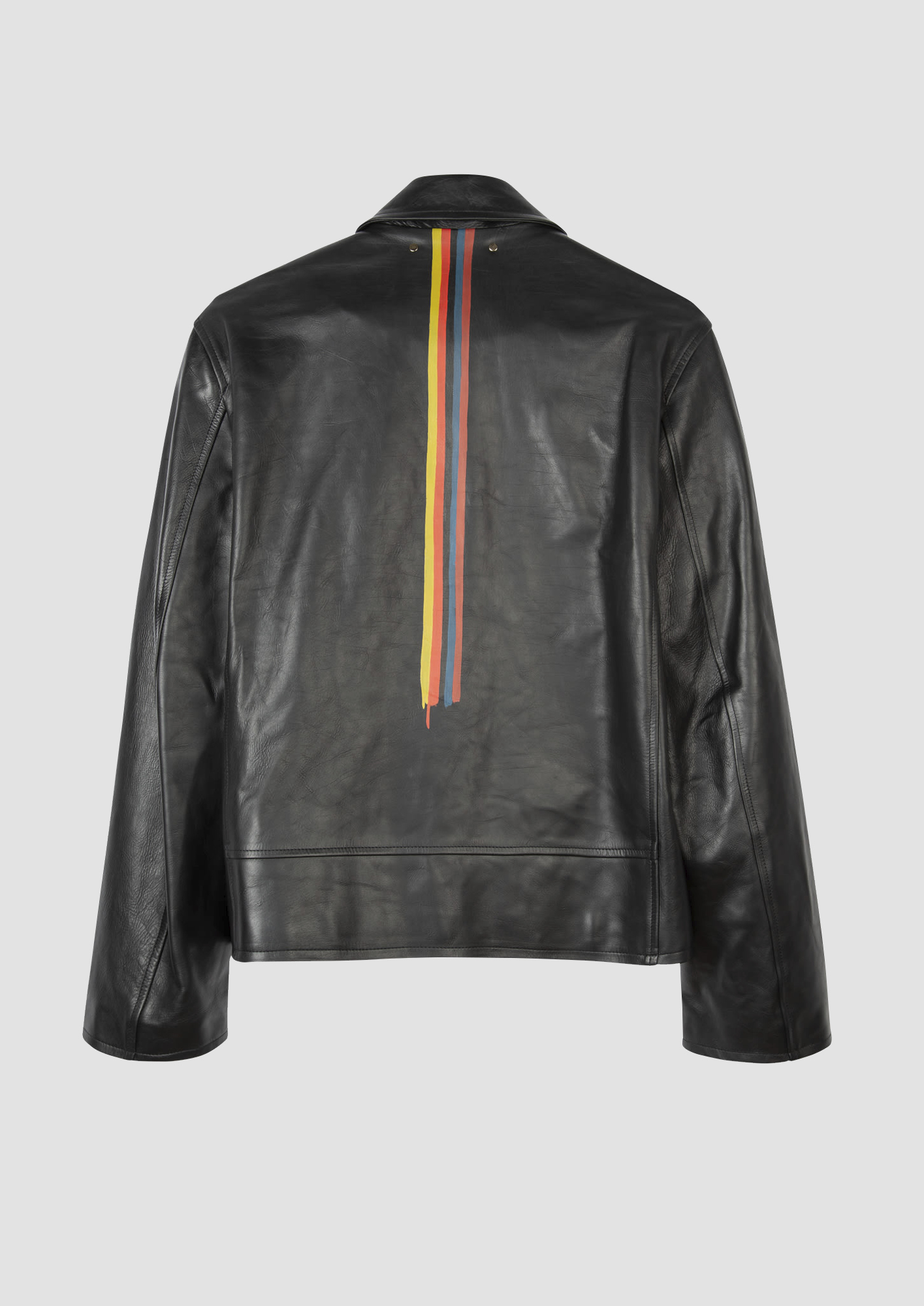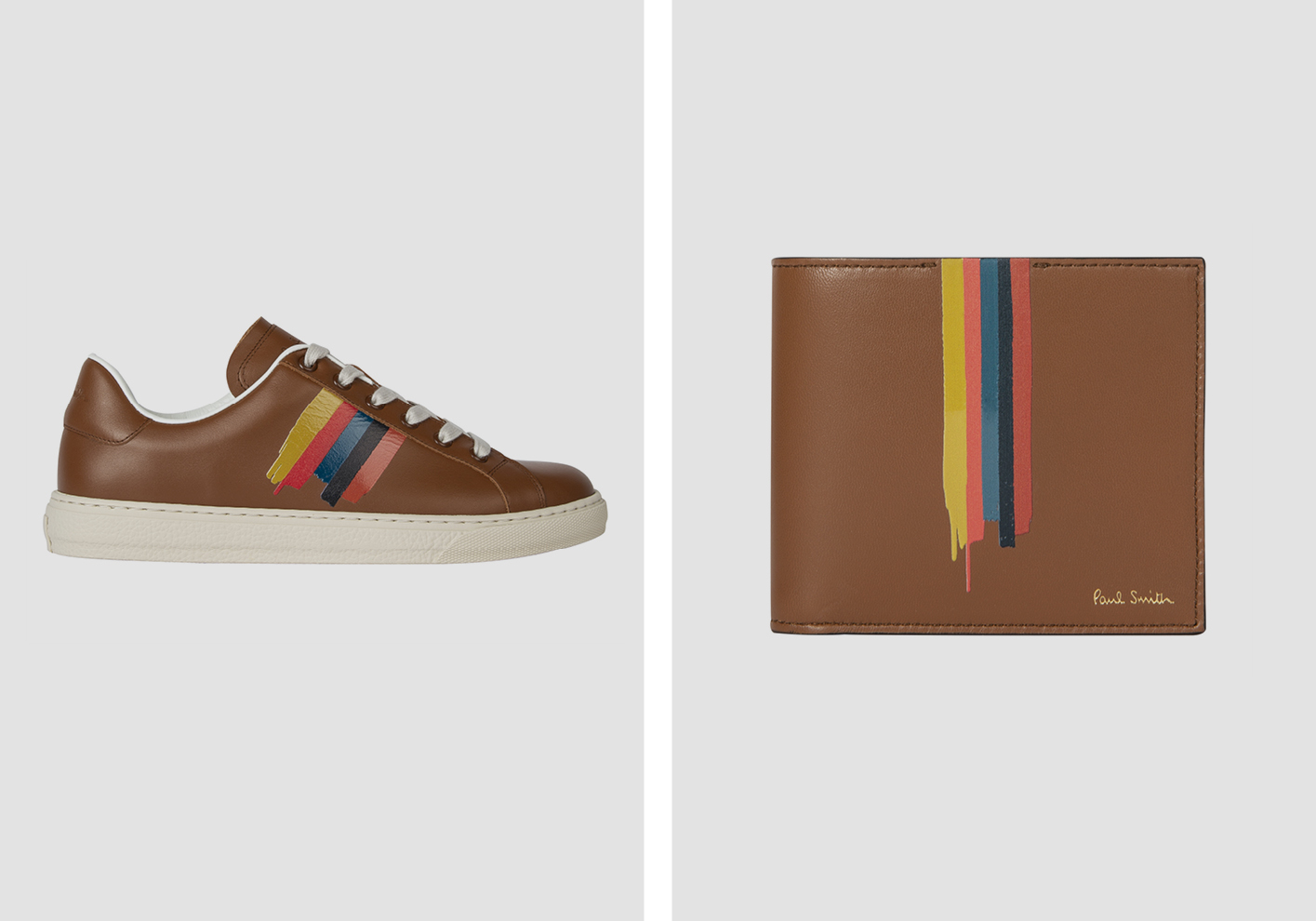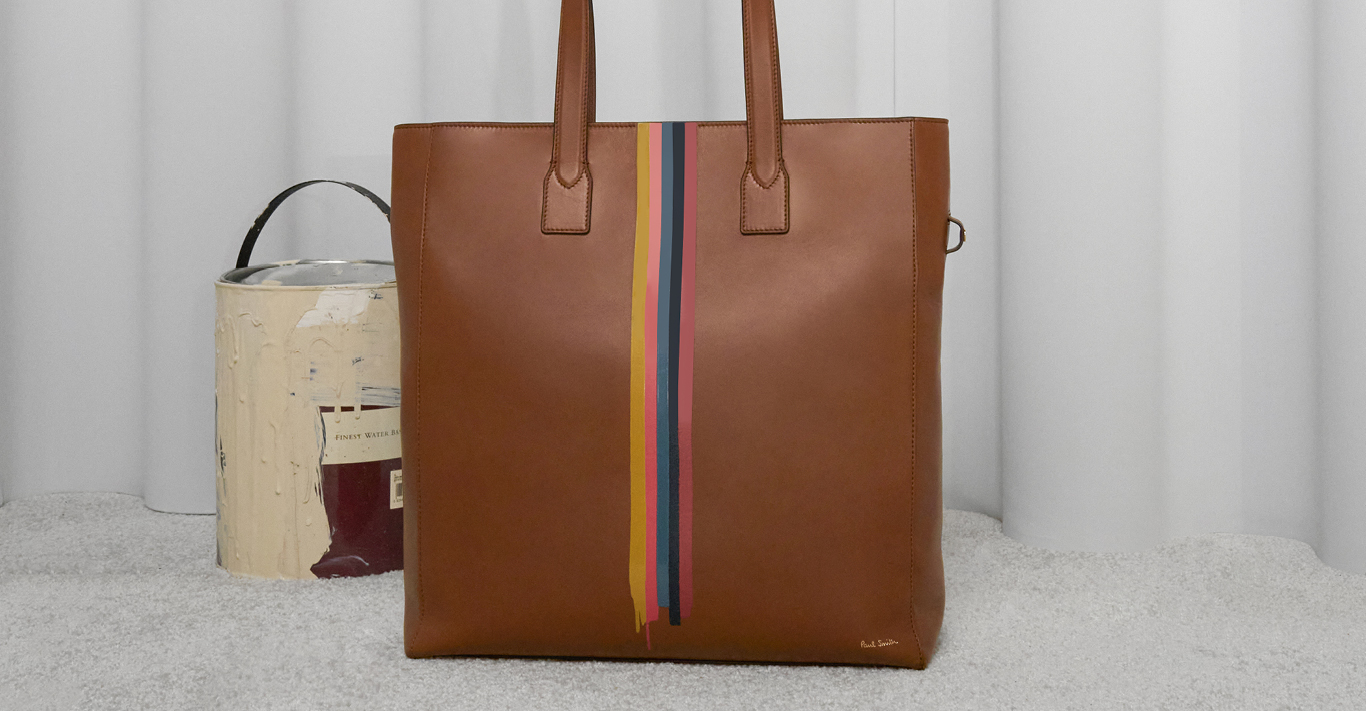WORDS
Jackson Ford
Anyone visiting Paul Smith’s oldest store in London’s Floral Street over the years will have been treated to the sight of a couple dressed in tweeds in a rural landscape that hung on the wall behind the till. The shop, which is still there today, is fitted out with old dark- wooden fixtures salvaged from a chocolate shop and chemists in Nottingham, Smith’s home town. To this rather classic foundation was added the quirkiness that Smith has become celebrated for.
The landed gentry pair, a large oil from the first half of the 20th century, were often mistaken by shoppers for Paul’s parents, a source of endless amusement to the designer, who left school at 15 and first started his business in 1970 in a windowless room in Nottingham measuring 12 foot square that was only open on a Saturday because the rest of the week he was working to fund his dream. He’d bought the picture as part of his assembly of eclectic oddities, and because he’d always had a liking for English portraiture of the 1930s and 1940s. And because it was big, and he thought it would look good in the space. He also liked the tweedy traditionalism of the outfits worn by the subjects, which contrasted so markedly with the vibrant stripes and patterns that he was producing in the 1980s and 1990s.

The picture is no longer there, but now the expanded store features many more. Some are by Paul’s wife, Pauline, who is a painter. Others are by friends or picked up over time. The collection spills over into his nearby offices and his home, and features works by well-known artists such as Peter Blake and RB Kitaj alongside those by people under the radar. And some are by students that the designer has sponsored.
One special print the designer still has is by his friend and customer David Hockney. Smith remembers buying it: ‘Pauline and I went to David’s first retrospective show at the Whitechapel, and there was a limited-edition print called Pretty Tulips. There were only 200. We’d come down specially to see the exhibition – we were living in Nottingham at the time – and I really wanted to buy one. I remember thinking that either I go home with Pretty Tulips or I pay the gas bill. Two weeks later they turned off the gas.’
In many ways David Hockney is the perfect Paul Smith artist – blending California sunniness with Yorkshire humour, just as Smith combines a no-nonsense northern attitude with a mischievous eccentricity and a love of international design. Smith recalls how Hockney would come into the Covent Garden store to buy brightly coloured, oversized sweaters. ‘It’s the way he puts things together,’ enthuses the designer. ‘Baggy trousers with plimsolls; I remember him in a lovely blue – a double-breasted pinstripe suit – matched with a tie in apple-green, for example. He’s very stylish in an idiosyncratic way; it’s a British thing to my mind, a mix of patterns and colours that is individual and fun.’

In the early days, Smith would put on exhibitions for artists in his store, and the more you speak to him the more you realise that the hand of the artist is something he enjoys and values. It is, he says, all about the human element that art represents. And this brings us to this season’s key motif at Paul Smith: the Artist Stripe.
The designer has, of course, got form with stripes, his most famous pattern being a multi-stripe that we have seen adorn not only clothing and accessories, but also a Mini car. The Artist Stripe was a variation on this theme, first introduced into Smith’s collections in the autumn/winter 2016-17 collection, inspired by the type of colour combinations found in expressionist paintings.
Now the Artist Stripe returns in a hand- painted style where the paint drips are left visible to emphasise the notion of the human touch. And while it has been applied to a whole host of men’s products, such as sportswear, and adorns the back of a leather biker jacket, it really comes into its own as the signature detail of a range of unisex tan leather bags.
These pieces – a backpack, satchel and two sizes of tote – are both practical and distinctive, the plain leather acting as a canvas for the five-colour decorative stripe, which looks as if it has been applied with a brush only moments ago. The visible drips at its end are the type of witty touch so typical of Smith’s work. A simple tribute to the artists he so loves.





